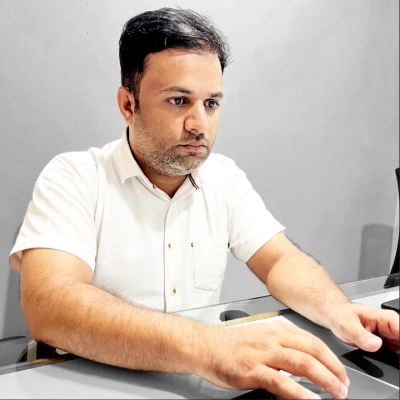4 Ways Businesses Use XR to Enhance Customer Experiences
The adoption of XR technologies is revolutionizing how businesses engage with customers, offering immersive and interactive experiences that transform traditional engagement models. This article examines four strategic applications of XR technology that are reshaping customer experiences across industries, backed by insights from leading experts in the field. By implementing these XR solutions, companies are seeing measurable improvements in customer satisfaction, reduced support needs, and stronger emotional connections with their products.
AR Creates Emotional Connections in Product Visualization
One of the most memorable XR projects I've been involved with was creating an interactive product experience using augmented reality that allowed customers to visualize products in their own space before buying. The goal was simple — bridge the gap between digital browsing and real-world confidence. What we didn't anticipate was how emotionally engaging it would become.
We built an AR tool that let customers scan their room with their phone and see a life-sized version of the product appear right in front of them. They could move it, rotate it, and even change colors or configurations in real time. What surprised us most wasn't just the engagement metrics — it was the delight people expressed when they realized how personal and intuitive the experience felt.
One customer sent a video of their child walking around the virtual product saying, "It's right here!" That moment captured exactly what XR can do — turn abstract decision-making into something tangible and fun. Instead of reading dimensions or imagining fit, customers felt the experience. That emotional connection translated into higher conversion rates and fewer returns, but more importantly, it deepened trust in the brand.
What I learned from that project is that XR isn't just a flashy add-on — it's a way to humanize digital commerce. When technology disappears into the background and the experience becomes natural, people stop thinking about the tool and start engaging with the story. That's when the real magic happens.
Industrial XR Models Become Collaborative Tools
Extended reality(XR) is a potential aspect for changing customer experience. It was for a complex industrial product line. Customers could use a headset or mobile AR app to explore a 3D model of their equipment, interact with components, and run simulated operations before installation. This reduced training time and eliminated costly on-site demos.
The most surprising reaction came from long-time clients who were initially sceptical. Instead of treating XR as a gimmick, they began using the virtual models as collaborative tools. Sharing annotated versions across teams to plan layouts and maintenance cycles. That unplanned use case helped us expand the platform into a new service offering.
What I learned was that the most meaningful "wow" moments. Especially those which don't come from the tech itself, but from customers discovering new ways to solve old problems once you hand them better tools.

AR Overlay Shifts Focus to Structural Details
I don't use abstract "XR" technology. My hands-on work is selling verifiable structural integrity. The closest example of using advanced visualization to enhance customer experience is our Augmented Reality (AR) Material Overlay.
The client problem is always the same: they cannot commit to a material or color because they fear "buyer's remorse"—the structural regret of living with a roof they hate for twenty years.
The hands-on implementation was simple: we use a mobile app that allows our sales team to take a picture of the client's actual house and instantly overlay 3D models of different shingle colors and material types onto the roofline.
The most surprising customer reaction to this implementation was not that they liked the look; it was the immediate focus on hands-on structural detail. We found that once the aesthetic decision was visually resolved, clients immediately shifted the conversation away from color and began asking granular structural questions, such as "How does the flashing look where the chimney meets that shingle color?" and "Does the new solar-ready decking show up under that virtual shingle?"
This surprise proved that the technology worked by eliminating the low-value distraction (color) and forcing the client's focus onto the high-value structural integrity. The best use of any technology is by a person who is committed to a simple, hands-on solution that removes emotional barriers and focuses the conversation on objective, structural truth.
3D Visuals Reduce Confirmation Calls
My business doesn't use "XR" (Extended Reality) for entertainment; we use it for operational necessity. The biggest hurdle in selling complex OEM Cummins parts is confirming the customer knows exactly what they are ordering.
The way we used automation—the closest thing to XR—to enhance the customer experience was implementing 3D Rotational Visual Confirmation on our site. When a customer selects a part, like a complex Turbocharger assembly, they can manipulate a high-resolution, 360-degree render of the actual part before checkout. This digital representation of the physical inventory shows every flange, every bolt hole, and every connector.
The most surprising customer reaction was not excitement over the technology, but the simple, immediate reduction in confirmation calls. Our expert fitment support team found that customers stopped calling to ask, "Does the flange look like this?" They were able to verify the fitment themselves.
This removed the emotional step of calling an expert and allowed us to focus our labor on complex troubleshooting, not simple visual confirmation. The ultimate lesson is: Technology enhances the experience not by adding features, but by providing physical certainty up front. We used the digital tool to validate the truth of the physical heavy duty trucks component, which is the only thing that truly matters to the customer.




